After enjoying my gelato in the air-conditioned cafe for a good long while, I walked around a corner to get my first glimpse of the Baroque Fontana di Trevi, or Trevi Fountain. It was built to celebrate the abundant water brought into the city by aqueducts. Oceanus rides across waves in a chariot, pulled by horses and horn-blowing tritons, commanding the flow of water. A triumphal arch bursts with seashells, roaring sea beasts, and mermaids. Legend has it that if you throw a coin in, you’ll be sure to return to the Eternal City. It must be thrown with the right hand over the left shoulder.
I was surprised by how the huge basin is squeezed into the tight tre vie, a meeting of three small streets.
I didn’t bother throwing a coin in as I already felt it was unlikely I’d return to Rome.
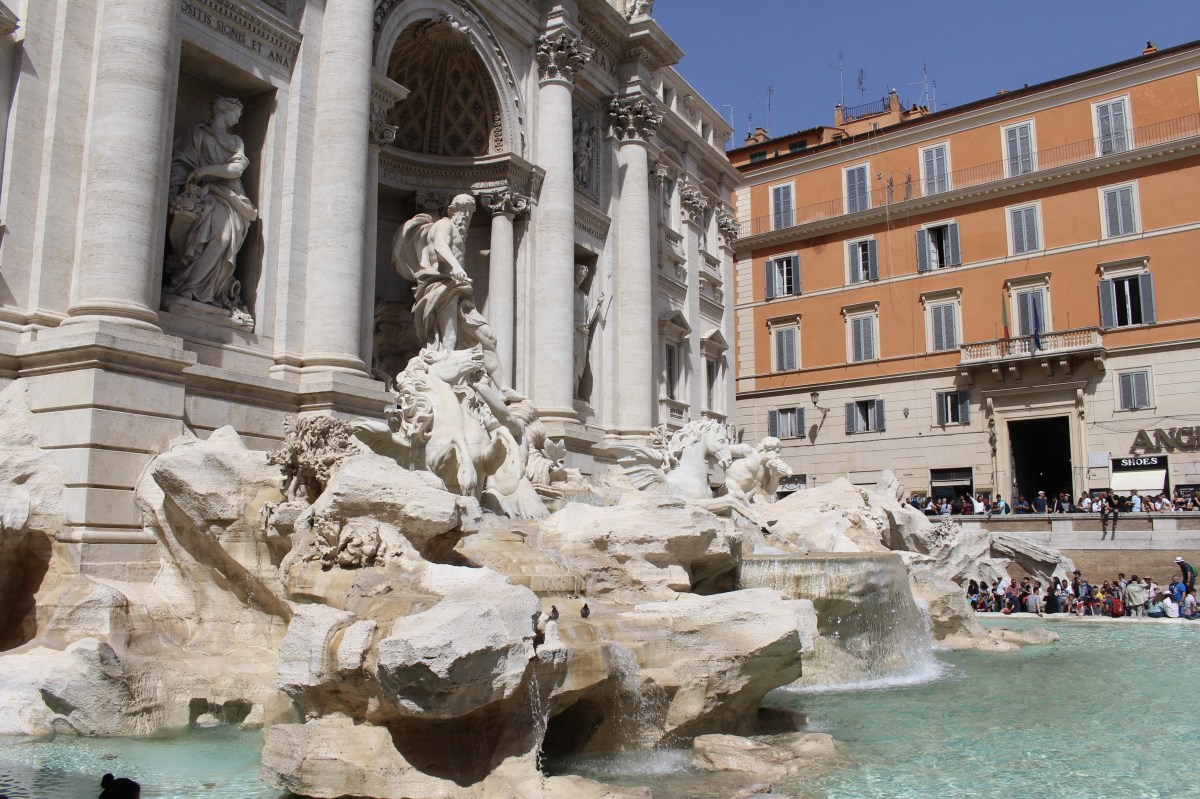
Trevi Fountain
One man was sitting in front of the fountain with his gnarled deformed feet stretched out in front of him, and a cup for donations at his side. People were 6-7 deep around the front of the fountain. It was impossible to get an unobstructed view. I was able to get up to the edge from the sides and got a couple of decent shots there.
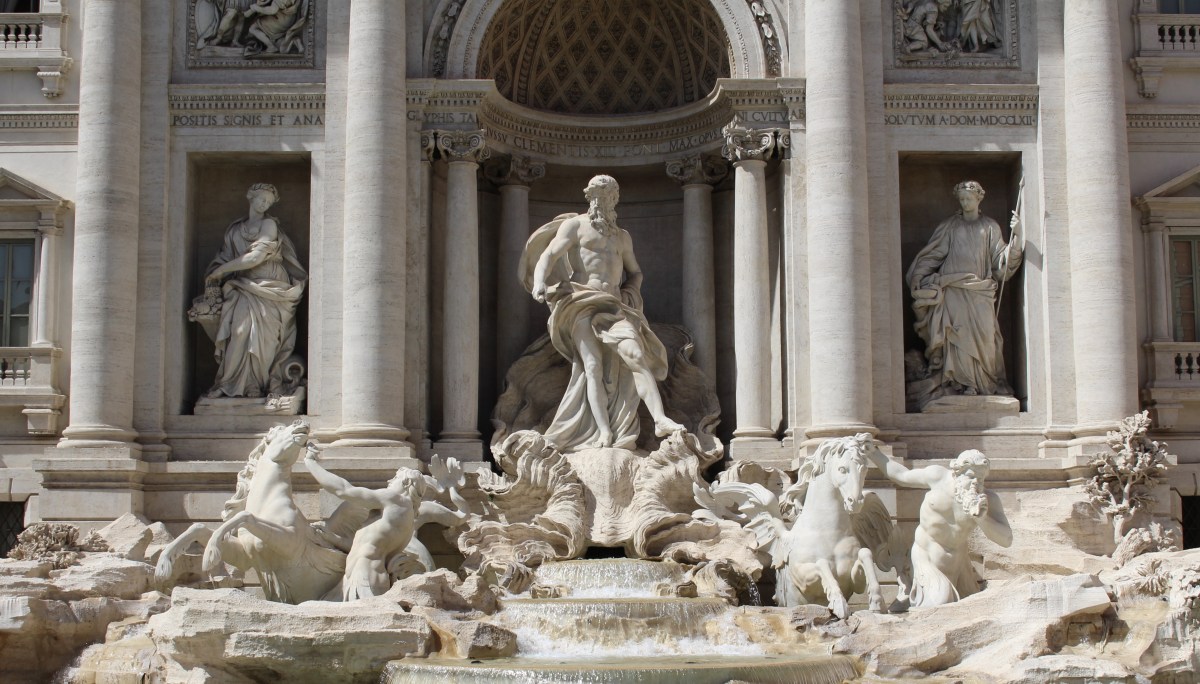
Trevi Fountain

Trevi Fountain
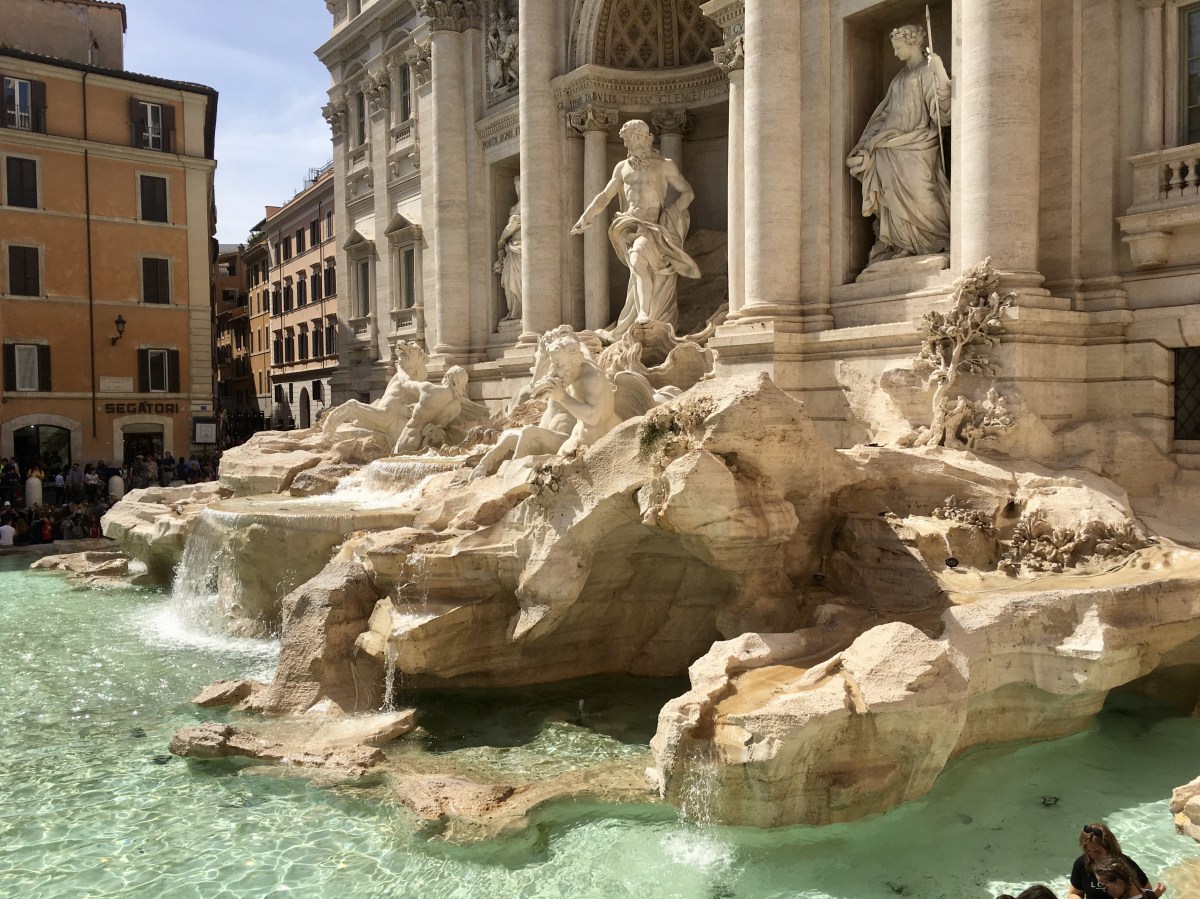
Trevi Fountain

building near the Trevi Fountain
It was quite a walk after that to the Spanish Steps, past Sant Andrea Delle Fratte and another obelisk and past the Keats-Shelley Memorial House to the famous steps.

fruit stand on the way through the Heart of Rome
In the square at the bottom of the steps was the “Sinking Boat” Barcaccia Fountain (1627-29). The half submerged boat brims with water, depicting the urban legend of a fishing boat supposedly lost during a 1598 flood of the Tiber. It supposedly ended up beached at this spot.

“Sinking Boat” Barcaccia Fountain
The 138 curving Spanish Steps, one of Rome’s iconic sights, lead up from Piazza di Spagna, forming a butterfly shape as they fan out around three terraces. They climb up a steep hill to the top, where another obelisk is framed between the two Baroque church towers of Trinità Dei Monti. Azaleas were in bloom between the steps making it quite pretty. The hordes of people made getting decent photos challenging.
Built in 1723 with French money, the steps are called Spanish because of the Spanish Embassy to the Vatican located here.

Spanish Steps

Spanish Steps

Spanish Steps
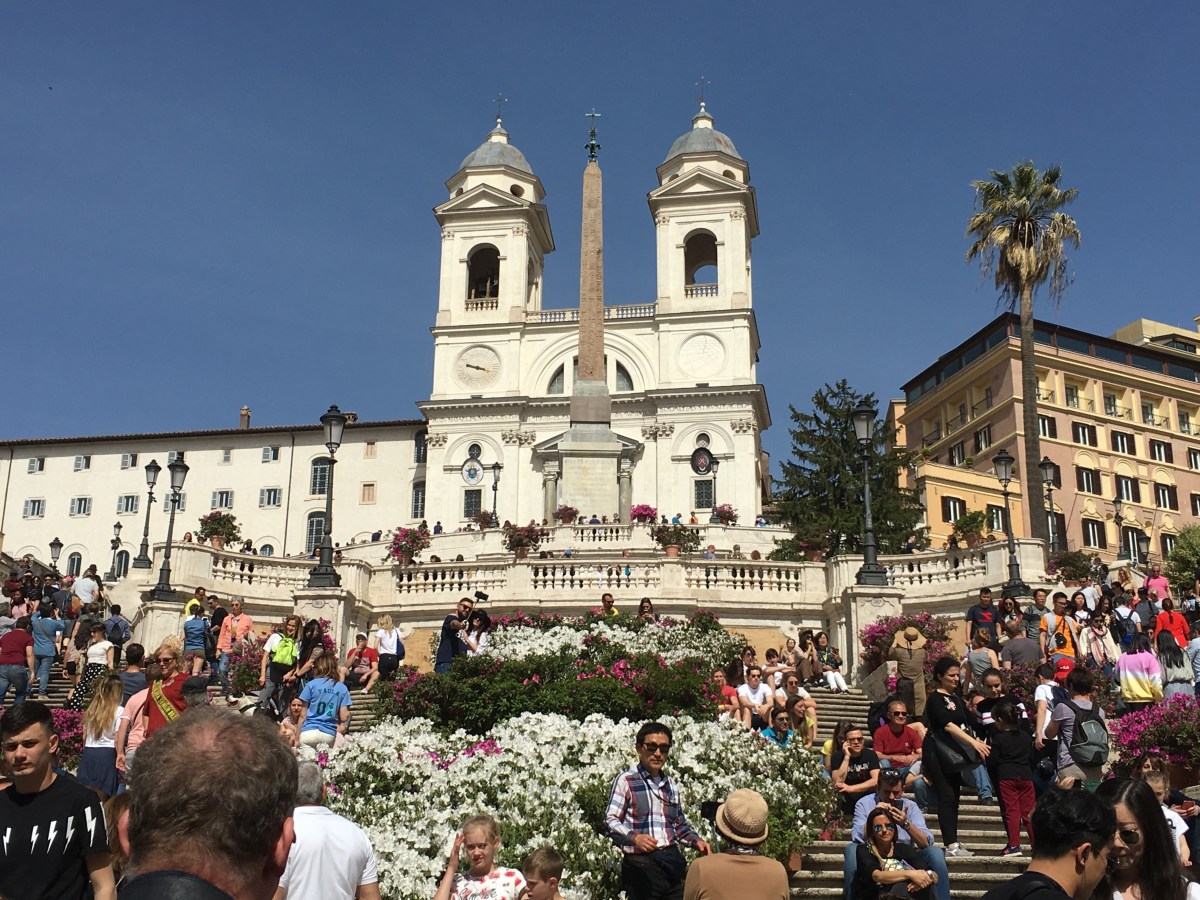
Spanish Steps

Spanish Steps

Trinitá DeI Monti and obelisk
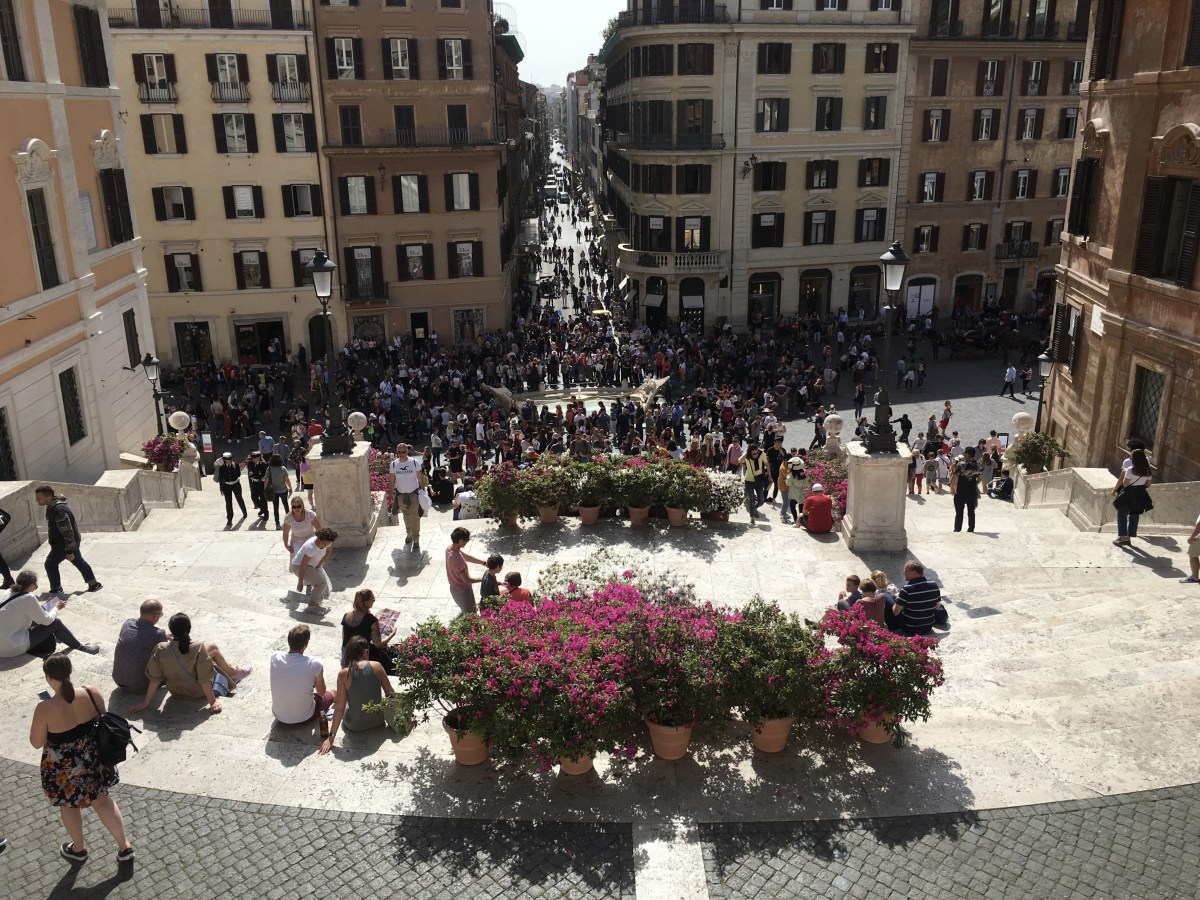
looking down from the Spanish Steps to Piazza di Spayna
It was hot, so the climb up left me in a sweat. I walked all over trying to find the hop-on hop-off bus.

Walking through Rome
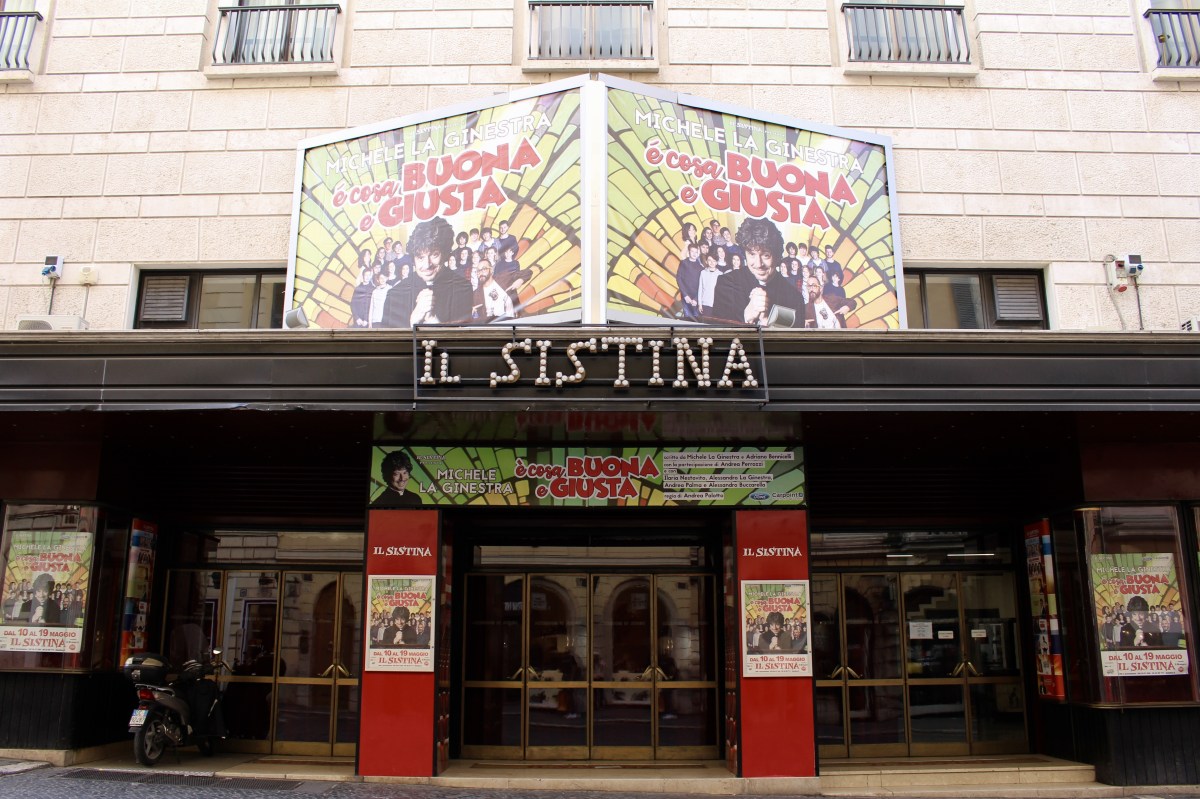
Il Sistina
I walked past the Convento dei Cappuccini, which houses six crypt chapels where everything is made of human bones. Between 1732 and 1775, resident Capuchin monks used the bones of nearly 4,000 of their departed brothers to create this macabre memento mori. Each crypt is named after the type of bone used to decorate (skulls, shin bones, pelvises etc).

Convento dei Cappuccini

Roman buildiing
Finally finding the hop-on bus, I took it back to the train station and meandered back to the Beehive Hostel. I laid down in my comfortable room at the Beehive with the windows open. Within minutes, I was asleep. An hour later, I woke up chilly, so I got under the covers and slept another hour.
At 7:30, I went downstairs to the cafe as Steve, the owner, originally from Denver, Colorado, made a delicious dinner: Beet, carrot and blood orange salad (also with onions and walnuts); Crostino with melted Pecorino cheese and sauteed mushrooms, Penna all’arrabbiata (slightly spicy pasta dish with tomato, garlic, red pepper flakes, and parsley), and biscotti for dessert. A 10€ donation plus a tip was suggested, plus 2€ per glass of wine (I had 2), so I left a 20€ total donation.
The people at our communal dinner were friendly and talkative: a German mother and her 17-year-old daughter, a young environmental scientist from California, a young lady from London, another from Germany who worked to empower women and who had lived in Ecuador for a year. She lived in Sangolqui south of Quito, on the outskirts of the city, smaller and safer, and she recommended I consider it as a base when I go to Ecuador. Finally, there was a pretty young woman from India who worked in film production. When I mentioned my son was a butcher apprentice in Denver, she said lately she’d been finding butchery quite fascinating as an artistic skill; she liked the way they prepared and cut the meat.

our dinner group at the Beehive Hostel
It was fun way to end my first day in Rome. When I shared about my 7-year-separation and teaching abroad, people talked about how different marriages work. I used my hands to show that before we separated, my husband and I were all jumbled up and intermingled, like a giant tangle with no boundaries, but after, we were like the picture below, coming together and going apart, sharing our lives but not all entangled:
∞∞∞∞∞∞∞∞∞
I went to bed close to 11:00 p.m.; I was fairly overwhelmed by my plan to visit the Vatican Museums the next day. I wished I hadn’t committed and debated whether I should just forfeit the 34€ I’d already paid and call it a sunk cost.
*2nd half of day 1: Thursday, April 25, 2019*
**************
On Sundays, I post about hikes or walks that I have taken in my travels; I may also post on other unrelated subjects. I will use these posts to participate in Jo’s Monday Walks or any other challenges that catch my fancy.
This post is in response to Jo’s Monday Walk: Corte Pequena.

You’ve got some beautiful photos of the city, Cathy. Impossible to avoid the crowds in tourist hot spots 🙂 🙂
LikeLike
Thanks so much, Jo. Crowds in Rome were the worst. Wait till you see my day through the Vatican Museums. What a nightmare!
LikeLiked by 1 person
Beautiful pictures as usual Cathy. I had seen Trevi late afternoon and Spanish Steps at dusk so seeing them in broad daylight was a treat, the crowd was pretty much bad then too. The Crypt sounds cool and Keats- Shelly House too. Missed both since I was not aware of them. Maybe I’ll go back, I remember flinging my coin over my left with my right hand. 😊
LikeLike
Thank you so much, Sheetal. I bet the Trevi and Spanish Steps are busy at all times of day! I never actually went into the Crypt or into the Keats-Shelly House; I only had two days, and I found it’s impossible to do Rome in 2 days! 🙂 Did you like Rome? I can’t say I was a fan because of the crowds.
LikeLiked by 1 person
It was Amor Roma all the way. As my first stop in my Italian Bucket list tour, I was starstruck by everything, such was my excitement! Also now I know, I just touched the tip of the iceberg; there aren’t enough days to really explore Rome. As for the crowds, didn’t bother me much, I was so enchanted by the Eternal City.
LikeLike
It was my first stop too, but I wasn’t as in love with it as you were. I’m glad you enjoyed! 🙂
LikeLiked by 1 person
I know you didn’t really enjoy Rome because of the heat and I do hope you’ll make it back one day in the spring so that it’s magic has a chance to work on you. Maybe you did too much each day? It can be punishing if you don’t stop for a rest during the day. I insist on lots of coffee-breaks when I’m travelling in cities. And in Rome, I’d advise anyone to forget some of the major sites and head for the Villa Borghese and Gardens for magnificent views over the city and green surroundings. You can even skip the Villa and just revel in the gardens.
LikeLike
It wasn’t so much the heat that bothered me as it was the crowds, Mari. It was overwhelming. I was actually there in spring – April 25 of last year. I only had two days, so it wasn’t enough, and I was frustrated that I didn’t have time to see what I wanted to see. I think if I ever went back, which I probably won’t, I’d want to be there in late fall and for at least 4-5 days. I’d also forgo all the tourist places and just wander aimlessly and stop for lots of coffee (or gelato) breaks as you suggest. 🙂
LikeLike
You had fantastic weather there!
LikeLike
Yes, we were luckier at the beginning of our time in Italy than we were once we got to Tuscany. Thanks, Pit. 🙂
LikeLike
The crowds are making me uneasy, just looking at the pictures! We went to Trevi Fountain and Spanish Steps at night – not quite so busy, and a bit cooler.
LikeLike
Yes, the crowds were horrible, Annabel. It really was overwhelming, and ruined the experience for me. I guess I should have visited those places at night to avoid crowds!
LikeLiked by 1 person
Your photos of the fountain are clear and marble-white and blue and inviting. I have to admit I don’t think much about the crowds, such is the quality of your work. The Spanish Steps showed the crowds as they’d have to. I don’t like crowds, so I don’t know how well I’d do in Rome or in many other places, no doubt. If you didn’t get to the Vatican Museum, then I shall look forward to reading (and viewing) about where you got.
Have a great week, Cathy!
LikeLike
Thanks so much, Christopher. I’m glad I was able to get some decent photos despite the hordes of people! I don’t like crowds either, and I’m trying to figure out how to travel these days to out-of-the-way places to avoid crowds at all costs. I really hate them! I did waste my entire day at the Vatican Museums and it was a nightmare. Never again!
You have a great week too. 🙂
LikeLike
It does look very crowded, I’m sure I’d hate that. But you still got some great photos. And a lovely dinner 🙂
LikeLike
The dinner and the nap were the best parts of the day, Jude. It was just way too crowded everywhere in Rome for my liking. 🙂
LikeLike
This must have been a lovely walk covering many of the well-known places in Rome. I would enjoy wandering along these streets.
LikeLike